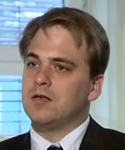- Investigation of Frame-Dragging-Like Signals from Spinning Superconductors using Laser Gyroscopes (2008) [Updated 1 decade ago]
- Measurement of Gravitomagnetic and Acceleration Fields around Rotating Superconductors (2007) [Updated 7 years ago]
- Investigation of Frame-Dragging-Like Signals from Spinning Superconductors using Laser Gyroscopes (2008) [Updated 1 decade ago]
The search for frame dragging around massive rotating objects such as the Earth is an important test for general relativity and is actively pursued with the LAGEOS and Gravity Probe-B satellites. Within the classical framework, frame dragging is independent of the state (normal or coherent) of the test mass. This was recently challenged by proposing that a large frame-dragging field could be responsible for a reported anomaly of the Cooperpair mass found in Niobium superconductors. In 2003, a test program was initiated at the Austrian Research Centers to investigate this conjecture using sensitive accelerometers and fiber optic gyroscopes in the close vicinity of fast spinning rings at cryogenic temperatures. This paper will discuss the measurements recently obtained with the fiber optic gyroscopes. They show, that the angular velocity applied to the superconductor can indeed be seen on the sensors below a critical temperature. The signal amplitude is about 8 orders of magnitude below the values applied to the ring for the case of clockwise rotation only. Counter-clockwise rotation responses were at least an order of magnitude weaker. The critical temperature for Al and Nb was 16 K and for YBCO around 32 K, which does not coincide with the material's superconducting temperature. The origin and the signature of the observed signals so far is not clear. Our measurements and analysis suggest that the signal cannot be explained by mechanical influence or by carefully monitored magnetic fields surrounding the sensors.
- Measurement of Gravitomagnetic and Acceleration Fields around Rotating Superconductors (2007) [Updated 7 years ago]
It is well known that a rotating superconductor produces a magnetic field proportional to its angular velocity. The authors conjectured earlier, that in addition to this so-called London moment, also a large gravitomagnetic field should appear to explain an apparent mass increase of Niobium Cooper-pairs. A similar field is predicted from Einstein's general relativity theory and the presently observed amount of dark energy in the universe. An experimental facility was designed and built to measure small acceleration fields as well as gravitomagnetic fields in the vicinity of a fast rotating and accelerating superconductor in order to detect this so-called gravitomagnetic London moment. This paper summarizes the efforts and results that have been obtained so far. Measurements with Niobium superconductors indeed show first signs which appear to be within a factor of 2 of our theoretical prediction. Possible error sources as well as the experimental difficulties are reviewed and discussed. If the gravitomagnetic London moment indeed exists, acceleration fields could be produced in a laboratory environment.


